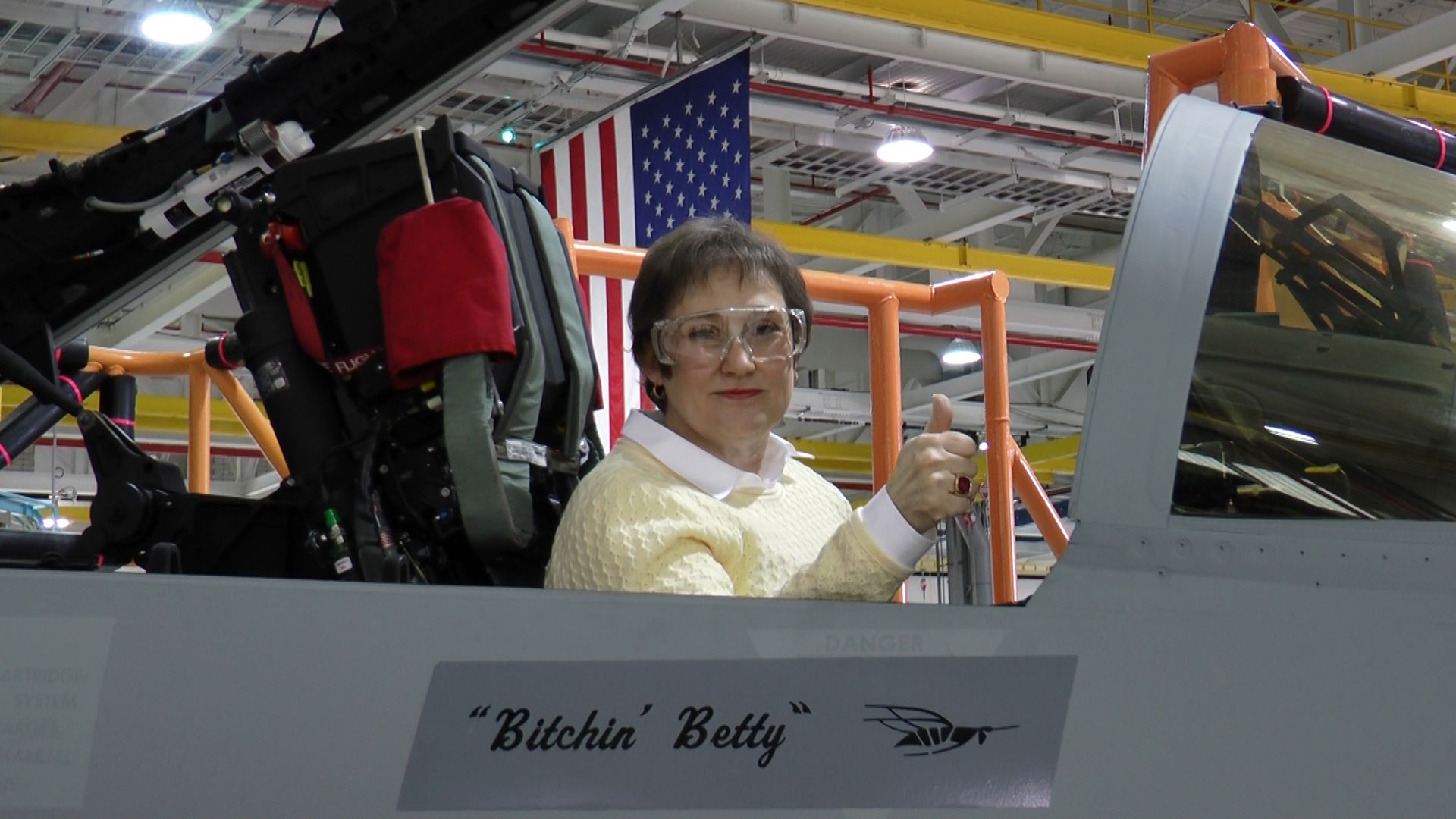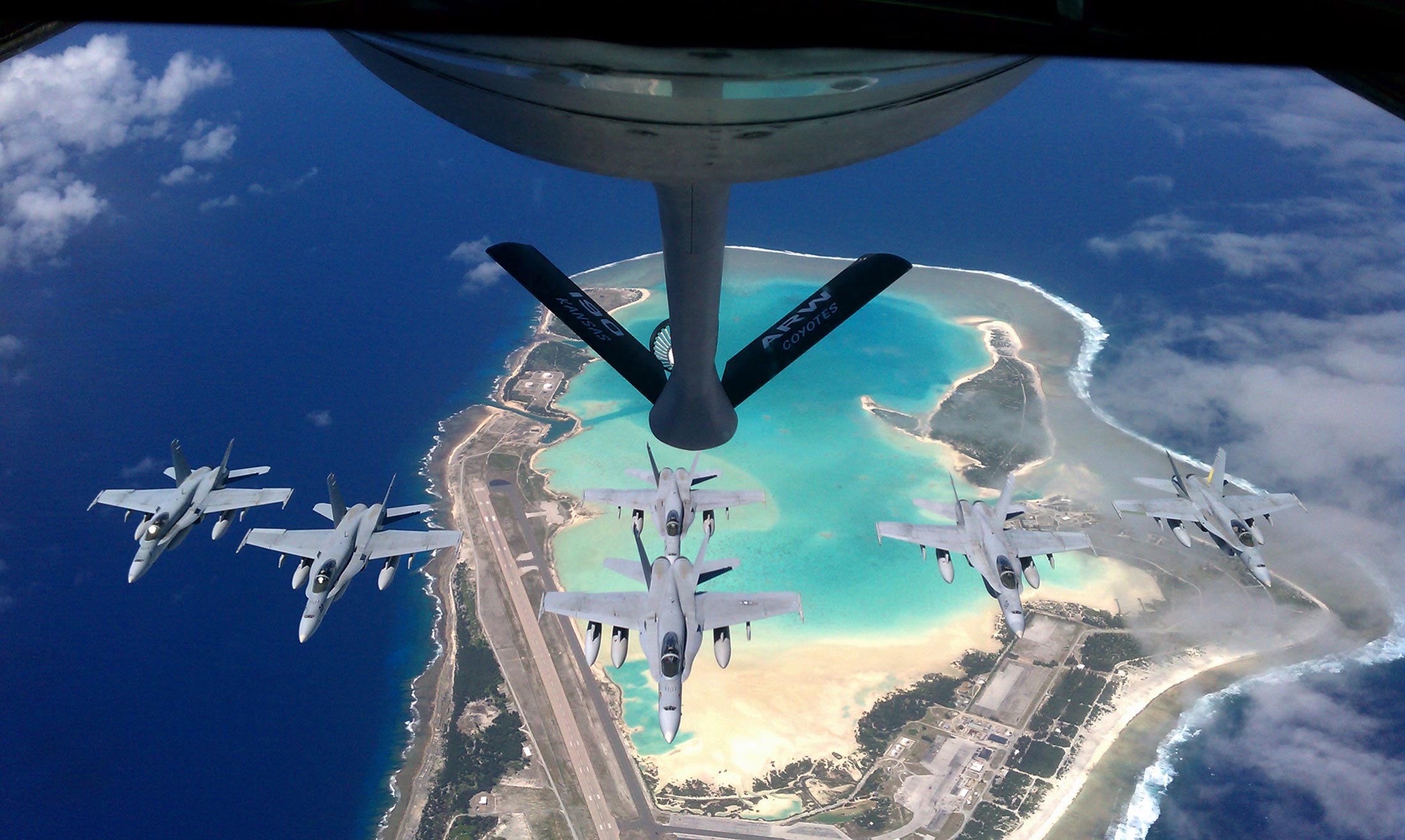TS
kuchinkx
[SELINGAN] Pilot Tempur Top Dunia Takut Suara Wanita Ini
The World's Top Fighter Pilots Fear This Woman's Voice
The woman who lent her distinctive twang to the F/A-18 Super Hornet flies off into the sunset.
By Justin Bachman | March 15, 2016

Source: Boeing Co.
All F/A-18 Super Hornet fighter jets come with a female voice that issues greetings and warnings, in tones ranging from stern and sharp to extremely urgent. It doesn't matter if the pilot is wearing a Malaysian, Kuwaiti, or Australian flag on his flight suit, the airplane speaks in a Tennessee twang that sounds a lot like Loretta Lynn in the middle of a very bad day. Embark on a miscue, and the jet issues an audible correction: “Roll right! Roll right!” or “Pull up! Pull up!”
Fighter pilots refer to the voice of the Super Hornet as “Bitchin' Betty,” while among Britain's Royal Air Force she is known as “Nagging Nora.” But a real woman personifies the aircraft, 60-year-old Leslie Shook, and she recently retired after 35 years as an employee of Boeing Co. “I knew I had an accent which I did not think was desirable in the plane,” Shook said in an interview, the voice familiar to generations of fighter pilots coming in clear over a telephone. “No one ever said anything about it. I was my own worst critic as far as that goes.”
Listen to Betty greet and scold.
[URL="https://S E N S O Rbloomberg-sound-assets/bitchin-betty"]Kompilasi Suara Bitching Betty[/URL]
After powering up the F/A-18 and hearing Shook's greeting, a pilot won't typically hear much from her again unless the situation gets serious. You might be in danger of flying into a mountain, triggering a warning recorded by Shook. Or perhaps you have just drained half the fuel supply for the mission, in which case you will hear her repeat: “Bingo. Bingo.”
Nearly every aircraft has its own voice. The first digital voice in a U.S. combat jet was that of Kim Crow, a professional actor who still does voice-over work. For whatever reason, women’s voices have been common in fighter jets and numerous civilian aircraft.
Shook worked in St. Louis for McDonnell Douglas, which Boeing acquired in 1997. McDonnell was among the first to use voice commands on the flight deck, for both civilian and military jets, and the company favored women for the job.
Shook’s involvement with the Hornet came about by happenstance, as one more job to record following a long day in her work as a video-services coordinator for the defense contractor. That meant she helped arrange such things as video shoots, photography, audio recordings, television commercials, and speaking events.

A KC-135 Stratotanker from the Kansas Air National Guard’s 190th Air Refueling Wing prepares to refuel Navy F/A-18 Hornets over Wake Island on March 7, 2011.
Source: U.S. Air Force photo/Staff Sgt. Ben Fulton
In the mid-1990s, when an F/A-18 customer requested a voice command for the jet’s ground-avoidance system, Boeing arranged a recording session. Several people were involved, including a Navy officer, and the woman recording the command wasn’t suitable.
“They did not like her voice; it was too sweet for the airplane,” Shook recalled. She was feeling tired and hungry that evening, ready to get home, and she stepped in with some voice advice. “I explained to them that Betty has a cadence, a sharpness to get your attention.”
The Navy officer suggested Shook do the recording, and the fighter jet quickly had its digital scold.

Shook tried to persuade Boeing managers to hire a professional voice actor to take over the job, but she was told there wasn’t money. So she studied cassettes of her predecessor's delivery for two weeks as she drove to work, practicing for her recording sessions.
“I was flabbergasted at the whole thing,” Shook says now. “I never expected to be in that jet.”
Boeing has delivered roughly 2,000 F/A-18 Hornets and the more advanced Super Hornet, and each one comes with about 50 English-language voice commands and alerts. Customization remains rare. “I was part of the package of the aircraft as it was, as it was sold,” Shook said. “If you’re in Malaysia you still get me, in English.”
The Swiss Air Force once requested a more Germanic-sounding pronunciation of the word “mach,” used to alert a pilot when breaking the sound barrier. Shook spent 45 frustrating minutes in the recording booth, trying to force her drawl into an approximation of an authentic Swiss pronunciation, before surrendering.
“I had to say, ‘Gentlemen, I can’t do that. I can’t make the sounds that you’re needing me to make.’” Swiss fighter jets now have a Tennesseean saying “super super” to denote supersonic speed.
Source: Bloomberg Business
Paragraph Biru -> Behind the voice dari F/A 18 ternyata adalah "nenek lampir" baik yang suka "marah-marah" untuk mengingatkan para pilot hornet
 Suara dibuat pada pertengahan 1990 berarti saat umur Shook sekitar 45 tahun.
Suara dibuat pada pertengahan 1990 berarti saat umur Shook sekitar 45 tahun.Par Hijau -> Seperti biasa, Perusahaan cari internal resource dulu dengan alasan ga ada duit..
 Pertanyaannya dengan hitungan kasar sekitar 2,000 F/A 18 yang di deliver, apakah Shook dapet tambahan uang jajan (royalty)??
Pertanyaannya dengan hitungan kasar sekitar 2,000 F/A 18 yang di deliver, apakah Shook dapet tambahan uang jajan (royalty)??Par Merah -> Super ngakak... "Mach" diganti "Super"


BøRK BøRK BøRK ‘Gentlemen, I can’t do that. I can’t make the sounds that you’re needing me to make.’


0
5.4K
12
Thread Digembok
Urutan
Terbaru
Terlama
Thread Digembok
Komunitas Pilihan